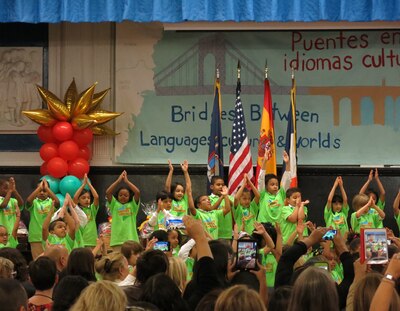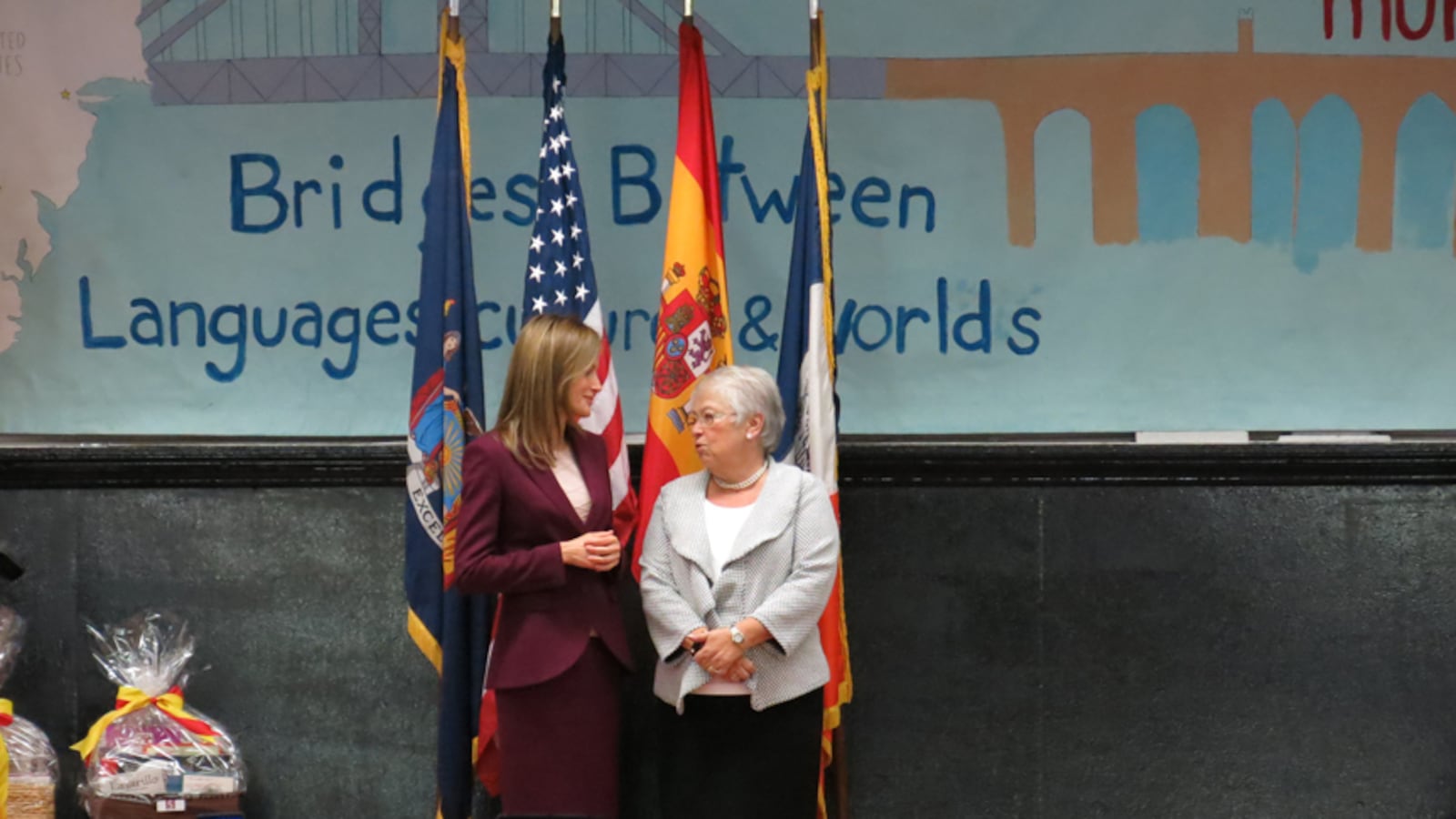It’s not often that an actual queen visits a city elementary school.
On Monday, Queen Letizia of Spain stopped by P.S. 103 Dos Puentes Elementary School, one of four city schools newly added to a network of U.S. schools with Spanish immersion programs. The visit, complete with balloons and a song-and-dance performance, added bit of royal flair to Chancellor Carmen Fariña’s continued focus on dual language programs and English language learners.
“My hope is to double and triple the number of schools involved in bilingualism and biculturalism,” the chancellor said. Specifically, Fariña said that she wants to add 40 new dual language programs across the city, though she didn’t provide a timeline for that plan.
One in seven students in the city school system—more than 159,000 students—is an English language learner, and those students tend to struggle on state exams. Only 3.4 percent passed this year’s state English exams, as opposed to 28.4 percent of all city students. Spanish is spoken by the largest share of those students, with two-thirds speaking the language at home.
Fariña, who frequently mentions her Spanish heritage, recently appointed Milady Baez to run the office of English language learners, which is now independent from the department that focuses on students with special needs. At events and press conferences, the chancellor has also mentioned the ways in which schools can better include parents who aren’t English-proficient.
In recent years, most English language learners have been in classrooms that focus on English-language instruction. But dual-language programs—in which some lessons are taught in English and other lessons are taught in another language, with the goal of students gaining fluency in both—have been increasing in popularity. City schools offer more than 480 bilingual programs with languages including Spanish, Mandarin or Arabic.

With the increase in dual-language programs comes a shortage of good texts to use, which had been the case for Alida Grafals, an assistant principal at P.S. 75 Emily Dickinson in the Upper East Side. P.S. 75 became the first school in New York state to join the immersion program, known as the International Spanish Academies, in 2012.
“Getting resources in Spanish is very hard,” she said at the Monday event. After her school joined the network, the Spanish government paid for some of her staff to attend a conference and put the school in touch with suppliers to get classroom materials originally written in Spanish, not translated into the language.
“If we’re teaching Spanish, it shouldn’t be translated,” she said.
Ya-ning Hsu, a professor at the Teachers College at Columbia University who has spoken with the Department of Education about how best to run dual-language programs, noted that there are even fewer classroom resources for languages other than Spanish, like Chinese.
“Teachers have to write their own books for children to read,” Hsu said. “We need more manpower, more resources.”
M.S. 223, The Laboratory School of Finance and Technology; and M.S. M247 Dual Language Middle School in the Upper West Side were also added the program.

